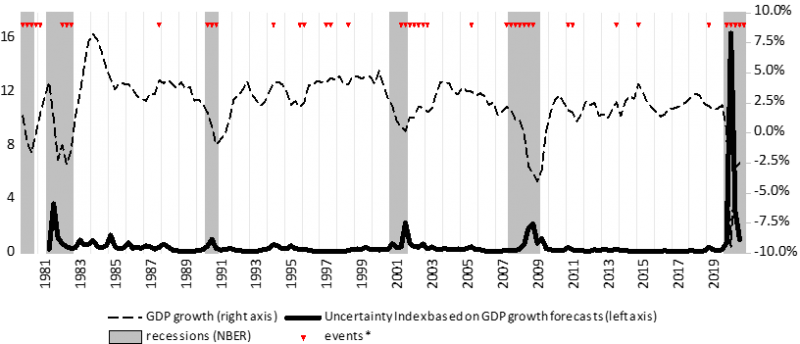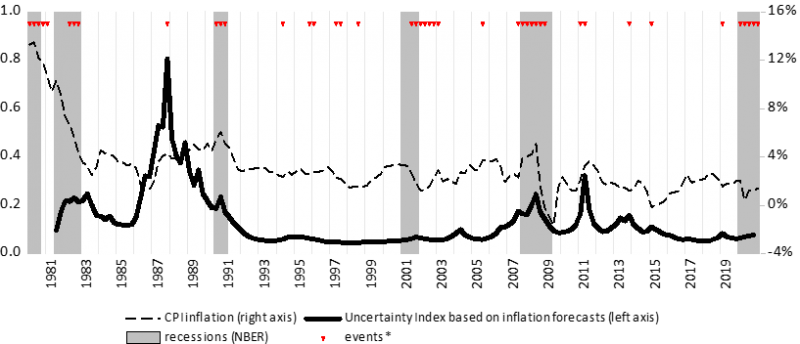References
Baker S., Bloom N., Davis S., 2016, Measuring economic policy uncertainty, The Quarterly Journal of Economics 131(4), 1593-1636.
Bloom N., 2009, The impact of uncertainty shocks, Econometrica 77(3), 623-685.
Jurado K., Ludvigson S.C., Ng S., 2015, Measuring uncertainty, American Economic Review 105(3), 1177-1216.
Kocięcki A., T. Łyziak, E. Stanisławska, 2022, Subjective Expectations and Uncertainty, NBP Working Paper No. 345, https://www.nbp.pl/publikacje/materialy_i_studia/345_en.pdf.
Leduc S., Liu Z., 2016, Uncertainty shocks are aggregate demand shocks, Journal of Monetary Economics 82, 20-35.



